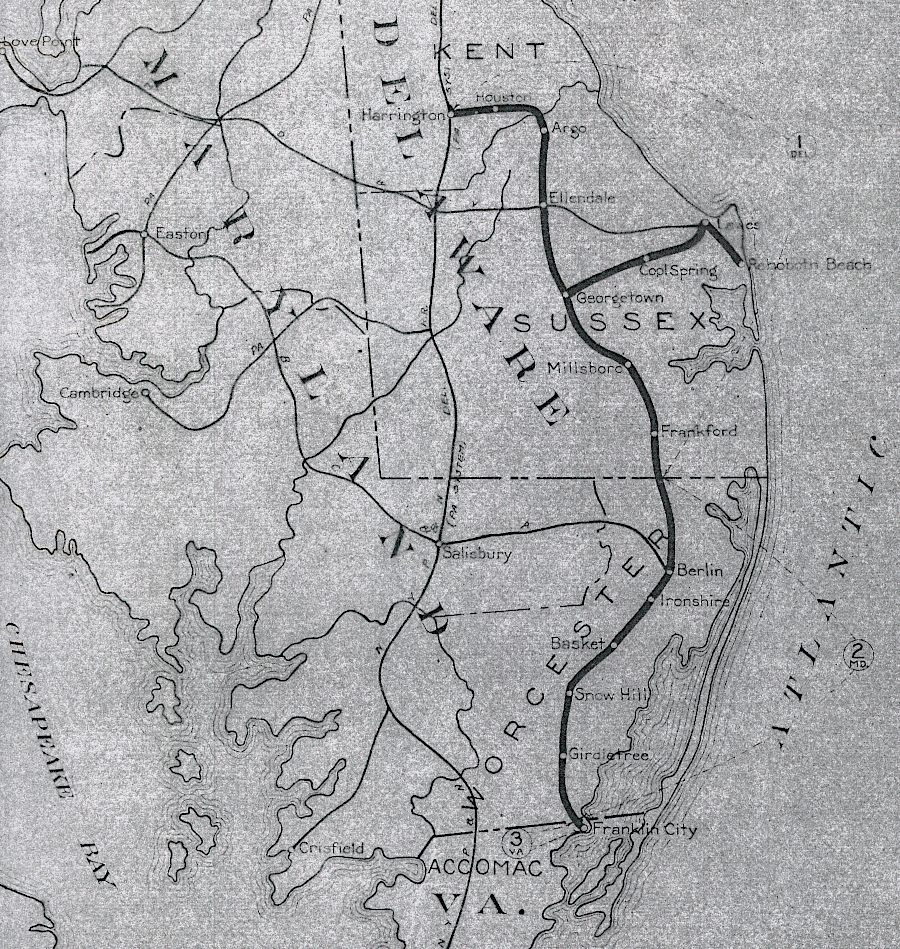
the Delaware Maryland and Virginia Railroad shipped seafood from Chincoteague to New York City
Source: National Archives, System Index Map - Delaware Maryland and Virginia Railroad (ca. 1915–ca. 1920)

the Delaware Maryland and Virginia Railroad shipped seafood from Chincoteague to New York City
Source: National Archives, System Index Map - Delaware Maryland and Virginia Railroad (ca. 1915–ca. 1920)
The first of the two railroads constructed on Virginia's Eastern Shore, initially named the Worcester Railroad, was chartered in 1853. That same year, the Pennsylvania Railroad acquired control over the Delaware Railroad, using its Philadelphia, Wilmington and Baltimore Railroad subsidiary.
The Pennsylvania Railroad financed construction by the Delaware Railroad through the center of the Delmarva peninsula in the 1850's. It carried produce and seafood from the Eastern Shore to urban customers in Philadelphia and New York City.
The Philadelphia, Wilmington and Baltimore Railroad absorbed the Delaware Railroad in 1857. The main line reached Delmar on the Delaware-Maryland border in 1859.
The Pennsylvania Railroad consolidated the Worcester Railroad in 1883 with other lines on the peninsula to create Delaware, Maryland and Virginia Railroad. That company lasted only two years. In 1885, it was consolidated into the Philadelphia, Wilmington and Baltimore Railroad.1
After the Civil War ended, the Philadelphia, Wilmington and Baltimore Railroad built short branch lines on the eastern edges of Delaware and Maryland. One branch line starting at Harrington reached Snow Hill in 1872, 20 miles east of the main line.
In 1876, the Worcester Railroad built new track south from Snow Hill, Maryland to the shoreline at Chincoteague Bay just south of the Maryland/Virginia boundary. Ferries connected Franklin to Chincoteague, and trains shipped oysters from local packing houses to New York and Philadelphia.
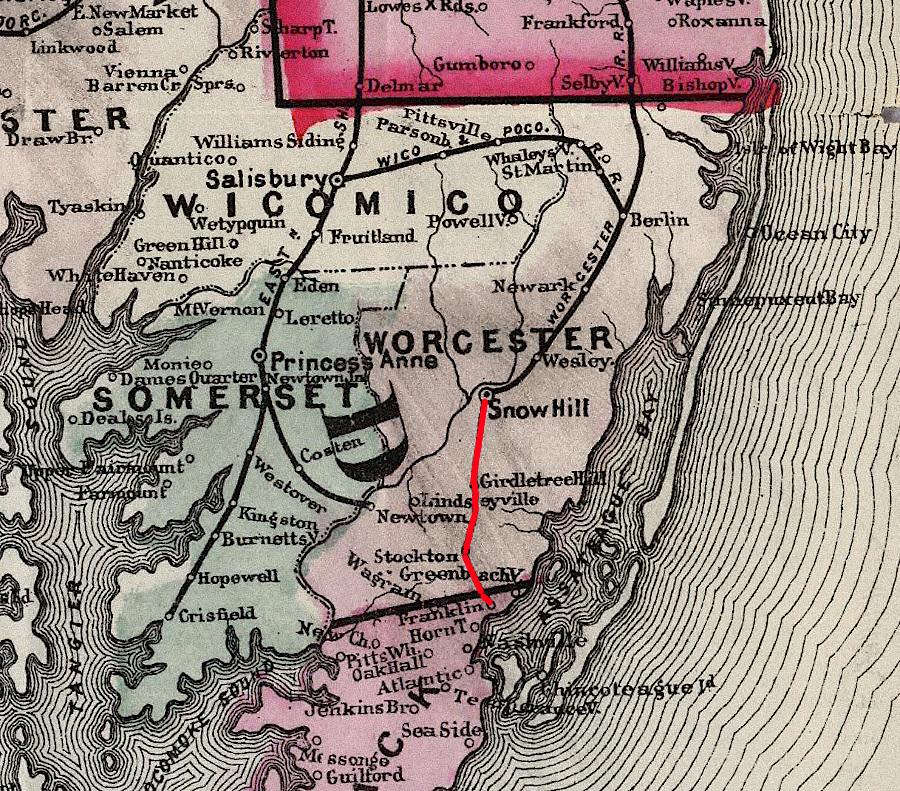
the Worcester Railroad built an extension to Franklin City (in red), and shipped seafood from Chincoteague to customers in Philadelphia and New York
Source: David Rumsey Map Collection, Cram's Railroad & County Map Of Virginia, W. Virginia, Maryland & Delaware (1881)
Trains arrived at Franklin City with the locomotive in front, facing the seashore. On the return trip to Snow Hill, trains backed up to a "wye" at the state line. The tracks there allowed the trains to turn and have the locomotive in the front for the rest of the trip.
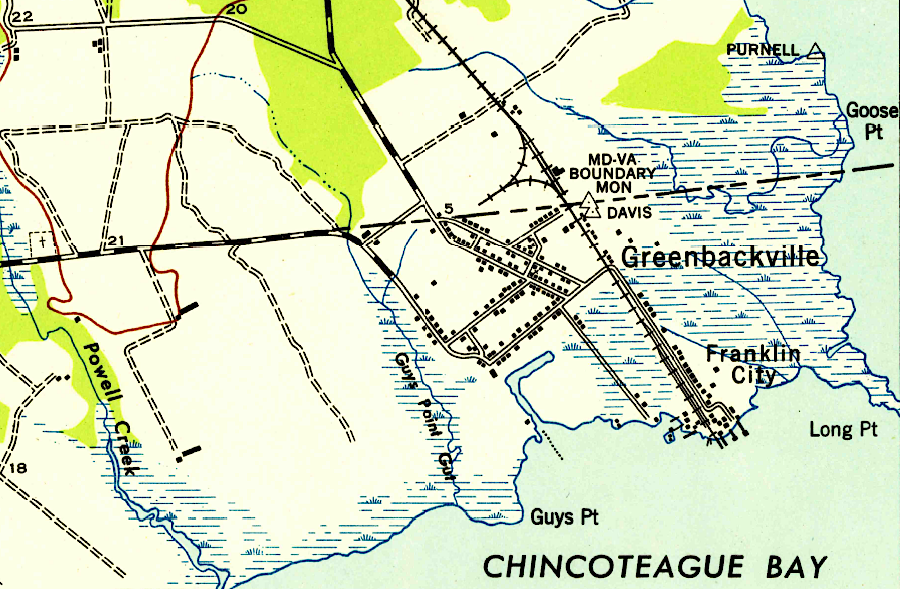
trains to Franklin City turned around at a "wye" on the Maryland border between 1876-1957
Source: US Geological Survey (USGS), Girdletree, MD 1:24,000 topographic quadrangle (1953)
The new community of Franklin City was developed at the terminus, on the edge of the water. Franklin City was named after John R. Franklin. He was a Maryland judge, stockholder in the railroad - and owner of the property where the railroad ended. That may have been a factor in the decision to extend the track into across the border into Virginia.2
The Pennsylvania Railroad consolidated the Worcester Railroad with other lines on the peninsula to create Delaware, Maryland and Virginia Railroad in 1883. It lasted only two years.
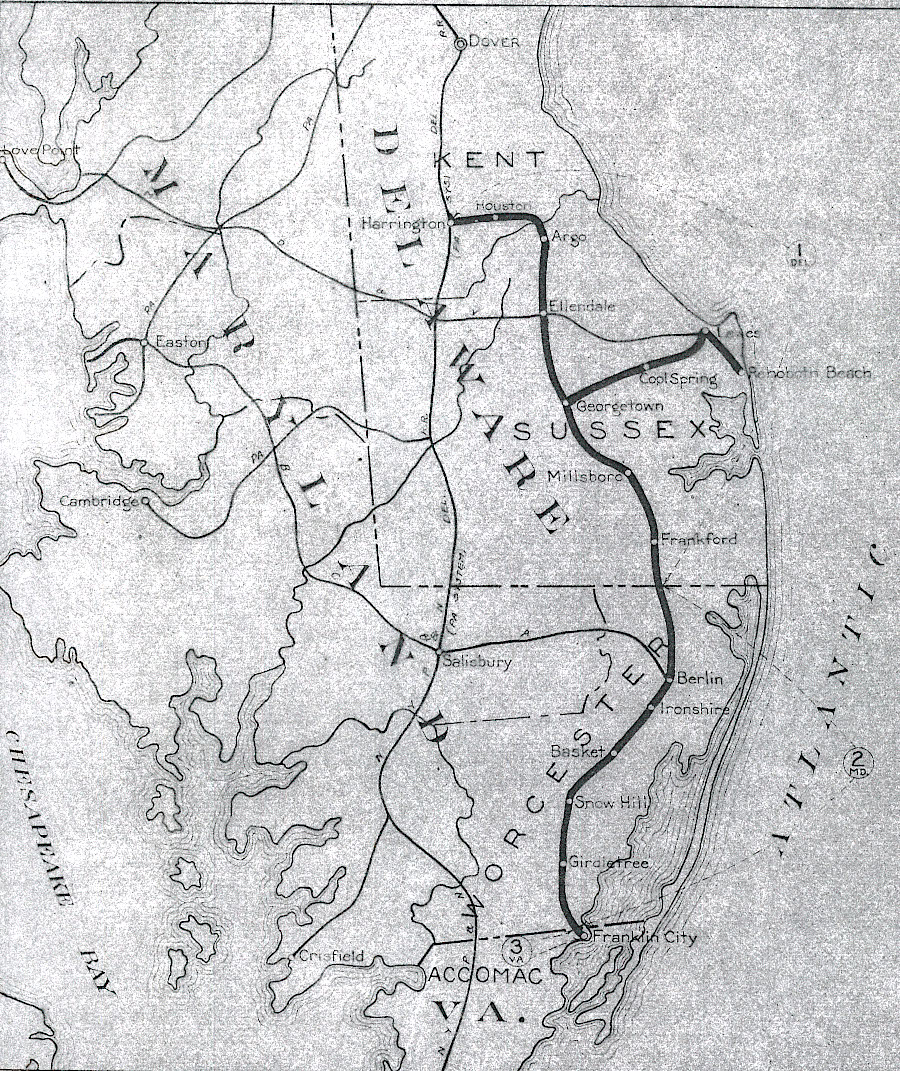
the Delaware Maryland and Virginia Railroad was folded into the Philadelphia, Wilmington and Baltimore Railroad in 1885
Source: National Archives, System Index Map
In 1885, the Delaware, Maryland and Virginia Railroad was consolidated into the Philadelphia, Wilmington and Baltimore Railroad.3
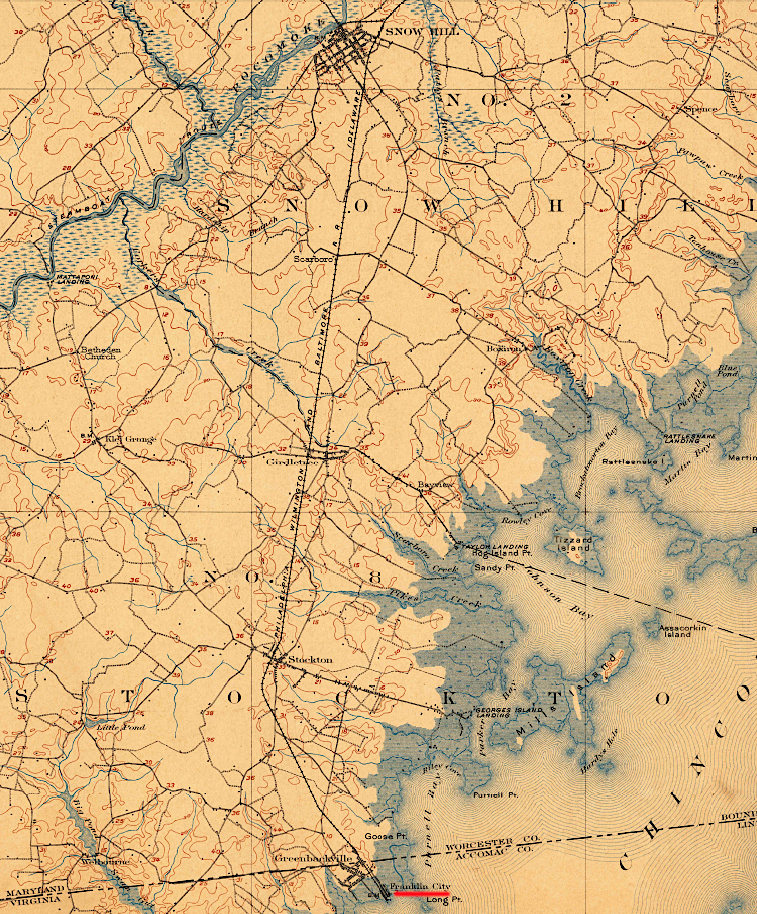
after 1883, Franklin City was served by the Delaware, Maryland and Virginia Railroad
Source: US Geological Survey (USGS), Snow Hill, MD 1:62,500 topographic quadrangle (1901)
In addition to hauling agricultural products and seafood, the Philadelphia, Wilmington and Baltimore Railroad carried passengers to Franklin City. Sportsmen used the train to get to Assateague Island for waterfowl hunting, where local residents built hunting camps and served as guides.
However, the oyster business declined. In 1922, the causeway to Chincoteague bypassed Franklin. As roads improved, it became easier to drive to Assateague and Chincoteague for recreation and to ship freight by truck. The Pennsylvania Railroad proposed abandoning the track between Snow Hill and Franklin City in 1955, and service ceased in 1957.
The 1962 Ash Wednesday storm left Franklin as a ghost town. Franklin did not benefit from the demand in the 1960's for recreational housing on the waterfront; no new houses were built there until 2008. By 2020, the train depot had been undermined by shoreline erosion and was a hazard that required its removal.4
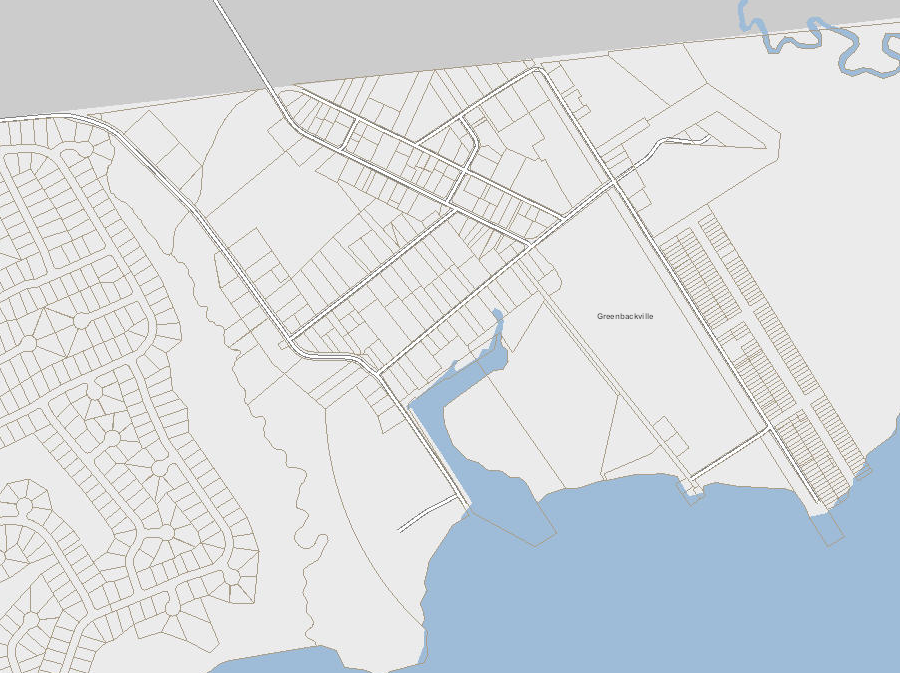
parcels subdivided at Franklin City reveal dreams of future development
Source: Accomack County, AccoMap
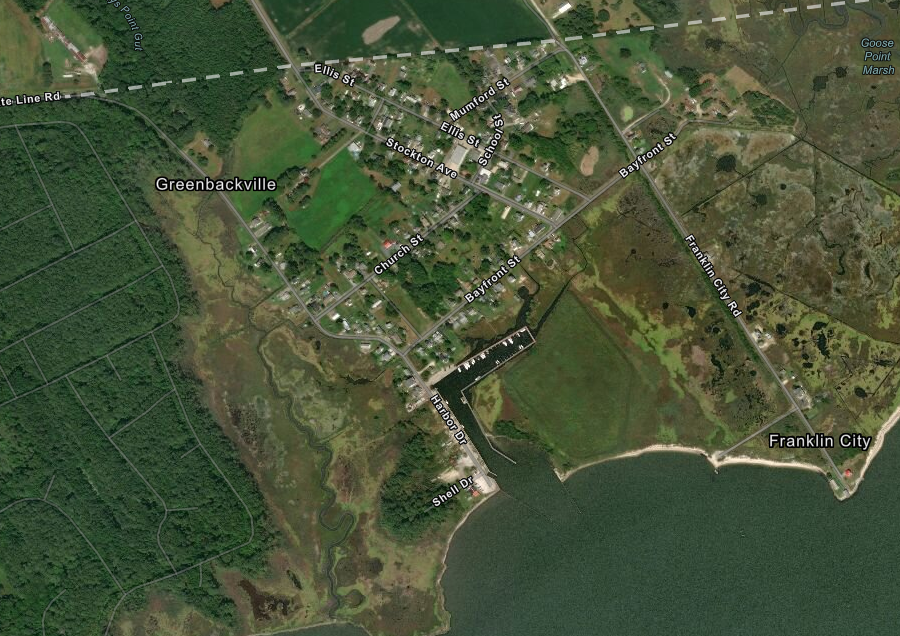
actual development at Franklin City in Accomack County
Source: ESRI, ArcGIS Online
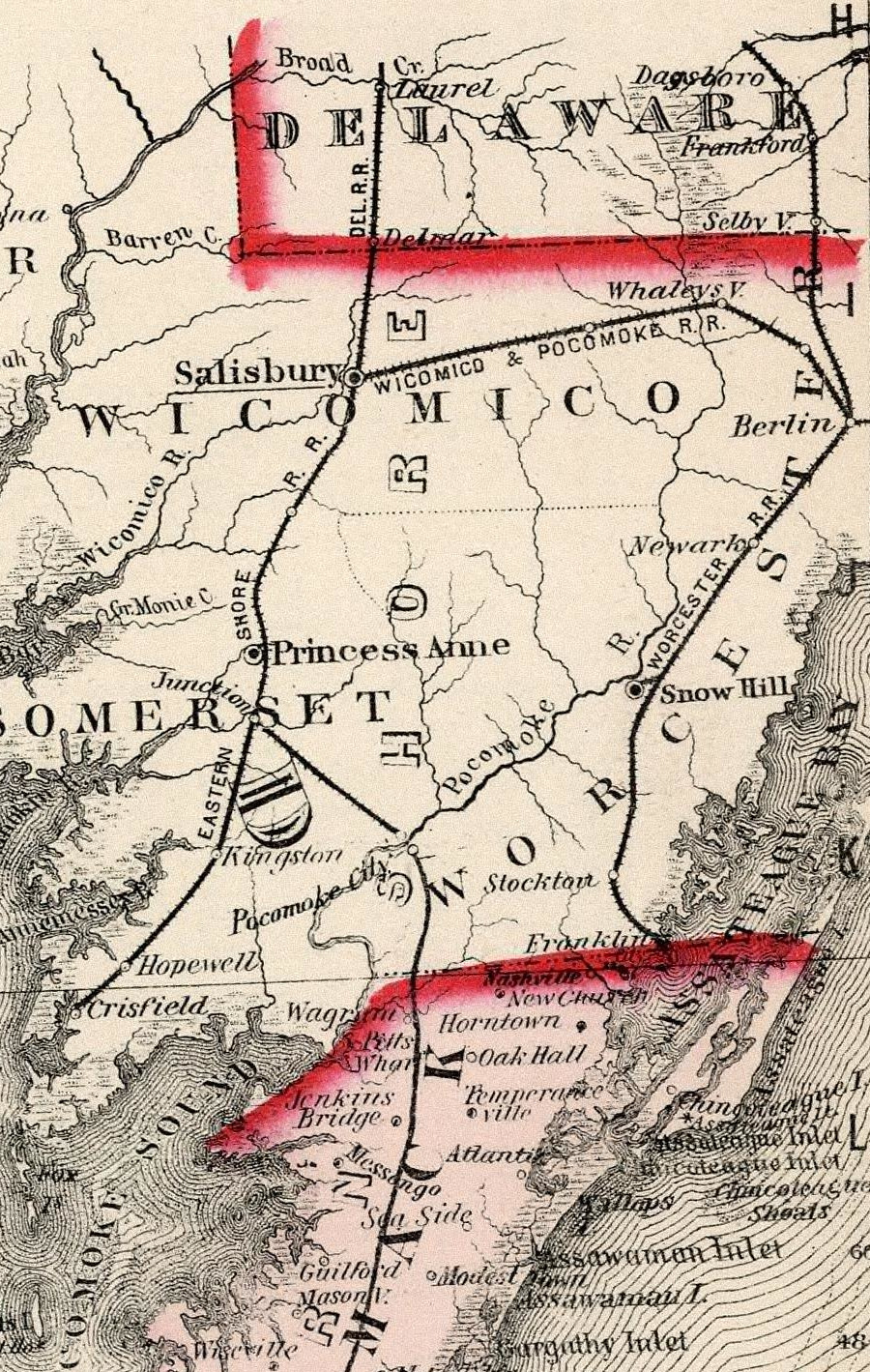
the DelMarVa rail network in 1877
Source: David Rumsey Historical Map Collection, Virginia and West Virginia (The National Atlas Containing Elaborate Topographical Maps Of The United States And The Dominion of Canada, by O. W. Gray, 1877)
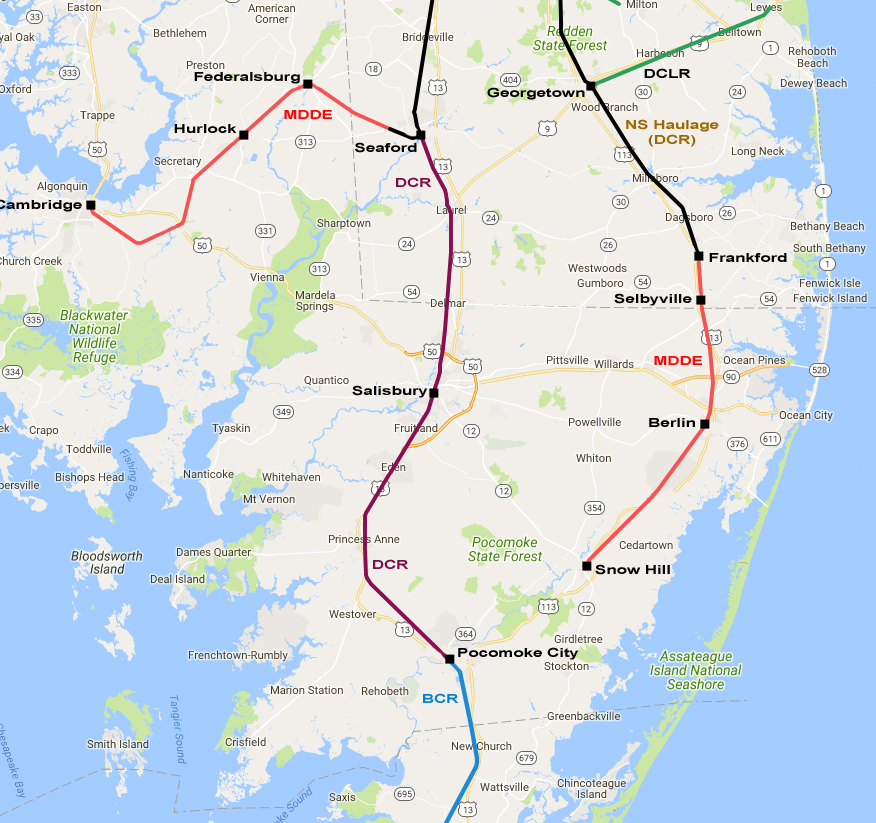
the modern railroad map of Delmarva shows how two parallel tracks were built from Delaware towards the south
Source: Maryland and Delaware Railroad Company, System Map
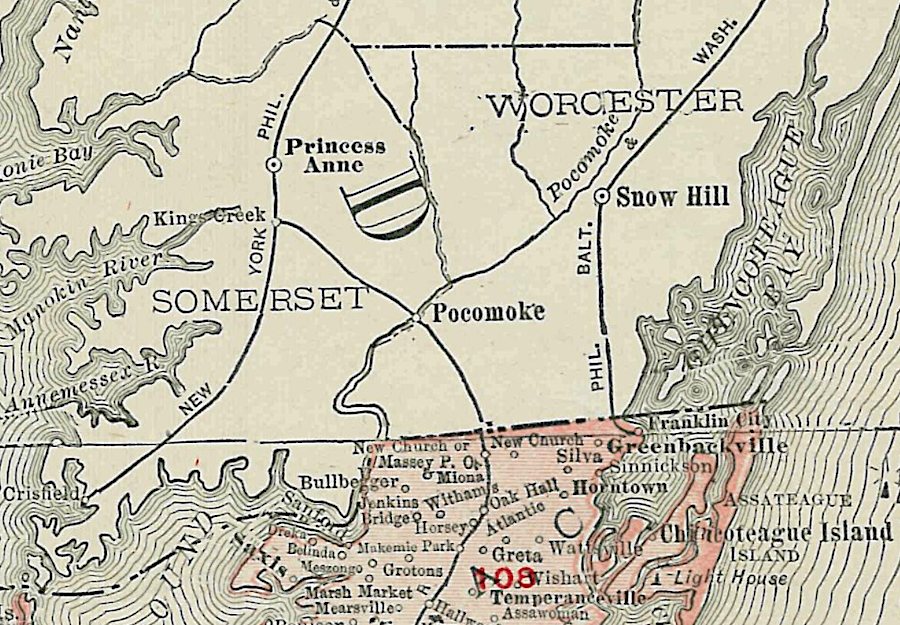
railroads on the Maryland-Virginia border of the Eastern Shore in 1913
Source: National Archives, The Library Atlas of the World; Volume 1: United States (1913)